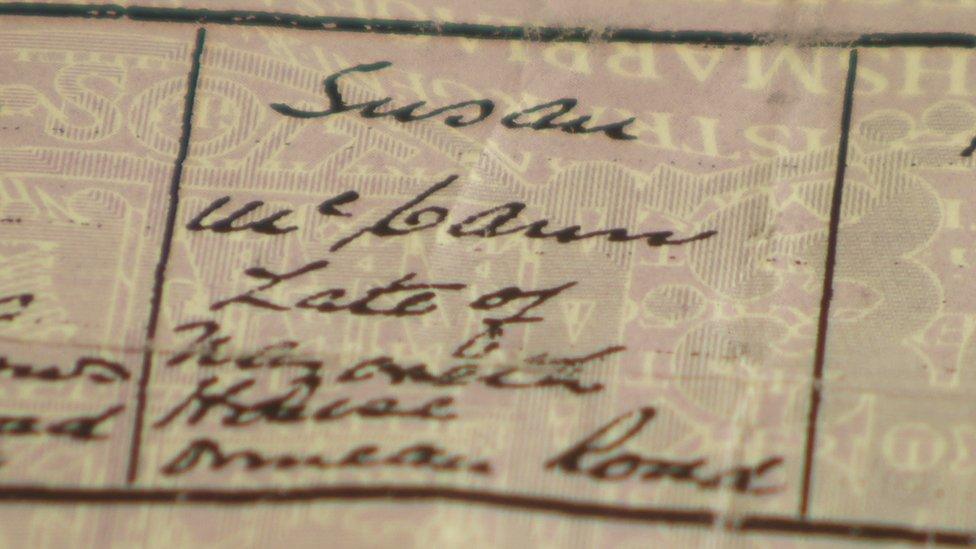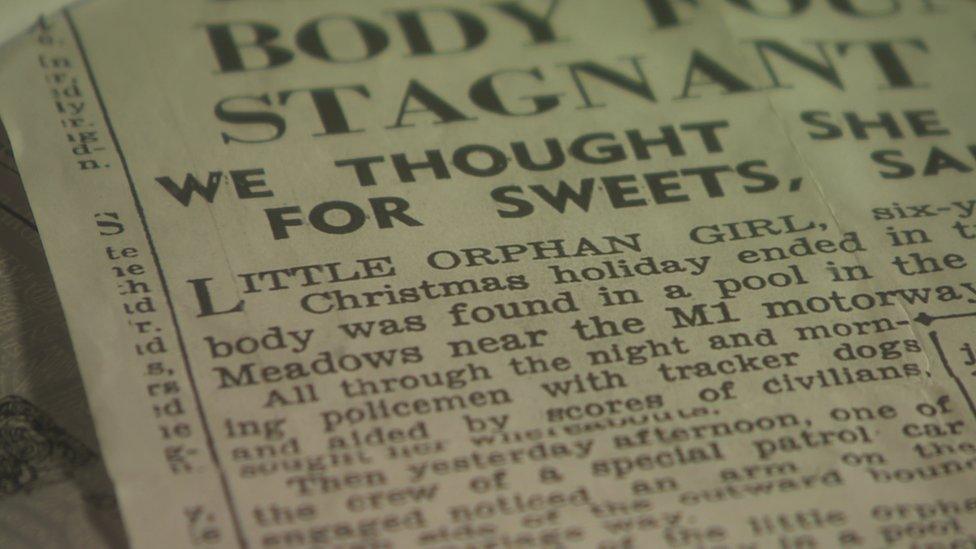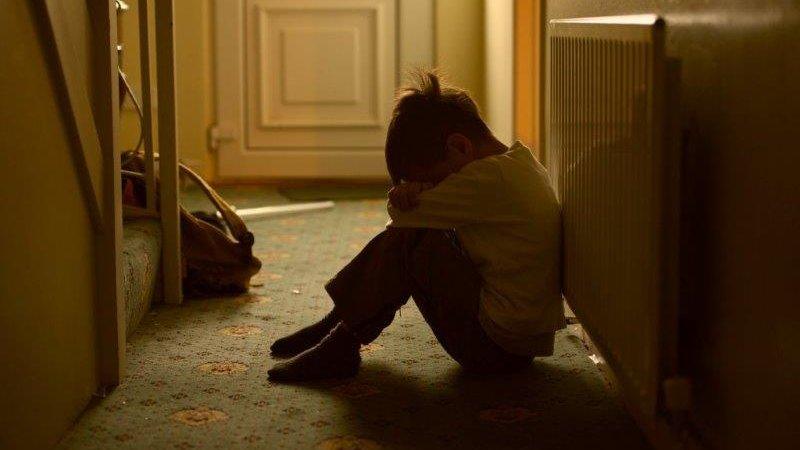Nazareth House: Forgotten orphan girl in an unmarked grave
- Published
'She certainly wasn't recognised in death'
There are few people who remember the death of a six-year-old girl from an orphanage in Belfast in 1963.
Susan McCann was a resident in Nazareth House and had been allowed out to spend time with a family in west Belfast.
Many of the secrets of what happened inside Nazareth House have emerged in the past 20 years.
The Historical Institutional Abuse Inquiry (HIA) severely criticised the Sisters of Nazareth for cruel and degrading treatment of children.
But what happened to Susan McCann has been forgotten, until now.
She was just six years old when she disappeared.
Fellow resident Marie-Therese Rogers-Moloney was 12 years old.
"We were all told to get up to the chapel and there was pandemonium," says Marie-Therese.

Susan's death certificate recorded the cause as 'fresh water drowning'
"At communion time, we all lined up and - to me as a child - there was a box and I thought 'why is Susan McCann sleeping?
"I went on and got my communion and I put it to the back of my mind but I couldn't forget about her.
'Stagnant pool'
"As the years went on I could hear the older girls saying 'Susan McCann, Susan McCann, I wonder what happened to Susan McCann?'"
Marie-Therese was determined to find out.
She started looking through old newspapers at Belfast Central Library and came across two articles a few days apart.
The first one describes a major search for the child in west Belfast.
The headline in the second one reads: "Little Susan's Body Found In Stagnant Pool".
"I sent for her death certificate and it said the cause of death was fresh water drowning and it also said 'parentage unknown', which made me more determined because I knew she didn't have anyone to speak for her."

A newspaper report told how Susan's Christmas holiday ended in tragedy
The next step was to find out where Susan was buried and that brought further mystery.
"Milltown Cemetery had no record of her burial nor did the graves department at the City Hall," said Marie-Therese.
"I thought I would phone O'Kane's funeral directors who were popular at the time and a few days later they came back to me and said they'd found her and she was in Milltown."
A journey to Milltown Cemetery followed.
"An hour later and we still couldn't find her. A workman told us we were in the wrong place and he took me over and pointed and said 'that's the grave', and I said 'there's nothing there'.
"I was absolutely shocked. You could have knocked me down with a feather and I said to the workman 'That's a child that's in the ground, that's an unmarked grave.'"
Marie-Therese says she is angry with the Sisters of Nazareth for not providing more dignity in death for Susan McCann.
In a statement a spokesperson for the Sisters of Nazareth said: "The death of any child is always profoundly sad. We understand from Diocesean records that Susan had a Catholic burial, while her burial is recorded she should have a marker to acknowledge her grave. For this we are sincerely sorry.
"We remember all those children who passed through our houses and particularly those who died as young children and they will be for ever more in our prayers."
'I was a number'
But considering the regime they endured, it is not a complete surprise, she says.
"When you came down from the nursery you were allocated a number, mine was 51.
"There were baths twice a week and you had to have your skin inspected and you had to shout your number out. Then you were bathed in Jeyes Fluid.
"That was the common thing. Again we didn't know anything different. That was the system.
"But we hated it and we hated the fact that we were always degraded."
Marie-Therese has one last wish: "My pursuit now is to get a headstone. Even if they'd put an angel on it or a wee white cross, this is the burial place of a child.
"She was hardly recognised in life and she certainly wasn't recognised in death."
- Published20 January 2017

- Published20 January 2017

- Published20 January 2017
